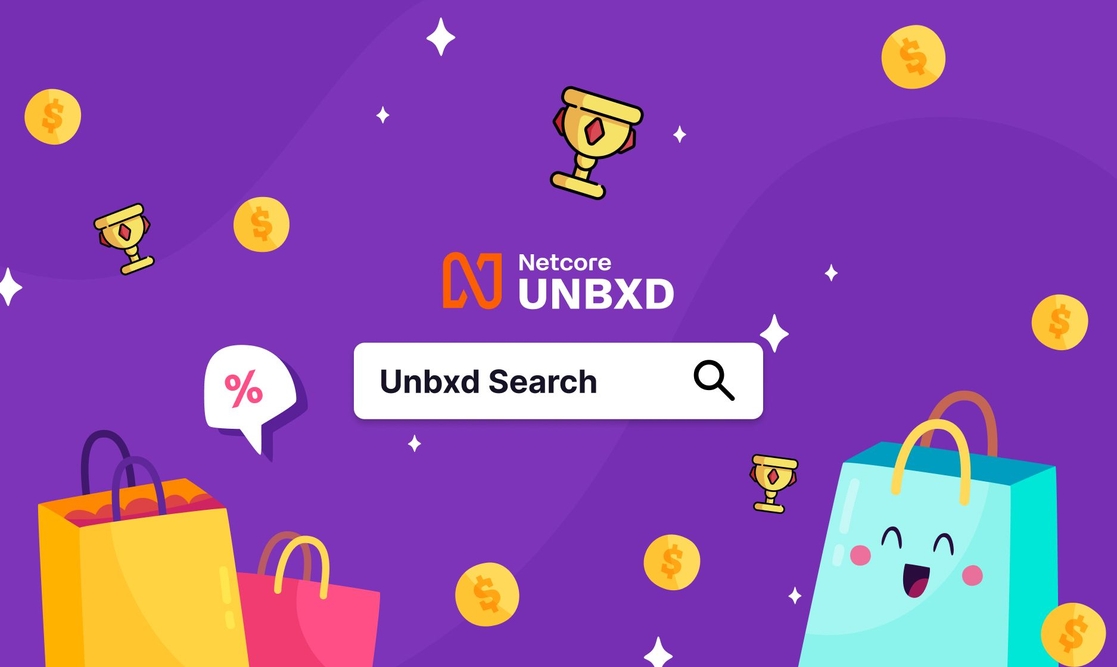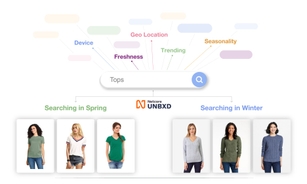- ProductsSearch and BrowseRecommendationsCustomer Engagement


In the time it takes you to read this, 37.8 million searches will be served on Google alone. That's a mind-blowing 6.3 million searches per minute on a global scale. And that's not even including the hits from the numerous other search engines that millions of people use on a daily basis. With the constant influx of new content, search engines like Google, Yahoo, and Bing tirelessly index billions of websites daily to ensure internet users can easily access the most relevant information when needed.

Gone are the days when a simple Google search would suffice to find exactly what we're looking for. Online shopping is convenient by integrating search tools into ecommerce websites' global navigation and header design. No more aimlessly scrolling through pages upon pages of products. A simple search bar can now lead you straight to your desired item. So the next time you're shopping online, be sure to utilize that handy search function – your future self (and wallet) will thank you.
Ecommerce search engines don't just mimic Google's capabilities. In addition to matching keywords and offering faceted search options, they also prioritize the most relevant results first, using a relevance score. And when there's too much data to fit on one page, ecommerce search systems use linear pagination and progressive loading to display products.
Plus, autocomplete, and autosuggest features save shoppers time by completing or suggesting terms as they type into the search bar.
Ecommerce search isn't just a "set it and forget it" system. It's often overlooked as a key factor in improving business for ecommerce, but it plays a vital role in helping shoppers like you find exactly what you're looking for.
In this post, we'll delve into how relevance, personalization, and autosuggest play a crucial role in ecommerce search systems.
Relevance

As ecommerce shoppers, we've all been there: searching for a specific product on a website, only to be met with a never-ending list of irrelevant or poorly-sorted results. It's frustrating. But as website owners, it's our job to make the search process as seamless as possible for our customers.
One way to do this is by considering our ranking strategy based on search terms. Sites like Amazon sort their results by relevance, listing products that closely match the keyword first. But sometimes, shoppers may not even know the exact name or term for the product they're looking for. That's where search algorithms come in handy, using a combination of autocomplete and predictive search to help shoppers construct their queries intuitively.
However, it's important to remember that people use different terms and expressions for the same things. For example, one person may call a certain type of clothing "trousers," while another calls it "pants."
A good search engine should be able to understand synonyms and provide relevant results no matter what term the shopper uses. This helps avoid leading shoppers to a dreaded zero results page, which can be disheartening and cause them to give up on their search.
To further improve the search experience, consider implementing fuzzy logic to detect and correct typos and offer alternative suggestions based on related keywords. This helps match the intent of the shopper and displays the most relevant list of products as helpful suggestions.
Once you've figured out what the shopper is looking for, it's also important to offer options to refine and sort the results. Sorting rearranges the results based on specific preferences, such as price or relevance. At the same time, filters allow shoppers to limit the number of results displayed and narrow down their options based on criteria like price range, brand, size, and color.
Ultimately, the goal is to help shoppers find what they're looking for as quickly and easily as possible, with as little frustration as possible. By implementing the right search strategies and focusing on usability, we can turn a potentially overwhelming experience into a satisfying one for our customers.
Personalization

We want our shoppers to feel unique, special, and understood. To achieve this, our websites should strive to match or exceed the shopping experience that customers would get in a physical store.
One of the most important places to do this is on the results page. This is where merchandisers and product managers can engage with shoppers and meet (or even exceed) their expectations. Even if shoppers are already familiar with the search feature, it can be helpful to store their recent searches to save them time and effort in the future. By continuously gathering data from shoppers and feeding it into our search algorithm, we can continually improve and adapt our search system to better understand their needs.
At the heart of an effective search system is something called "query understanding," which is essentially the process of matching search queries to relevant keywords. By understanding a shopper's intent, we can provide them with the most relevant and valuable results.
What can I do to personalize my search engine?
Consumers have become accustomed to employing a more conversational approach when searching for products online. For instance, individuals may input queries such as "Nike shoes for teenagers" into search engines. To accurately match these contextual requests, these platforms must comprehend and interpret human language. However, many contemporary ecommerce websites lack personalized search functionality. This is because their search algorithms typically rely on information from cookies stored on the local machine, which do not comprehensively understand the shopper's preferences or identity. While cookie data may reveal an individual's recent purchasing history, it does not provide insight into their overall characteristics or preferences.
On the other hand, imagine using a search engine tailored to your specific needs as a shopper. The results of such a system would be significantly more relevant and valuable. By leveraging artificial intelligence and machine learning, search engines can be personalized to make the shopping experience more efficient and effective.
Autosuggest
A good product recommendation system is integral to any site search system, helping shoppers discover new items and choose the most relevant search terms. Traditional recommendation systems typically include a static list of product suggestions for specific "anchor" products. However, there are many ways to innovate and enhance your recommendation system to make it even more effective at helping shoppers find the products they want.
Remember, the ultimate goal of any product discovery system is to assist your shoppers in finding what they're looking for, and an effective recommendation system is a key part of achieving this goal.
How can we improve the quality of our suggestions?
The effectiveness of suggestion systems varies depending on the nature of the ecommerce business. For instance, if a website sells computer hardware, its suggestions will differ from those of a fashion retailer. In the case of Amazon, typing in "Mo" for a search for monitors resulted in suggestions such as "Mouse," "Mosquito Killer Machines," "Mobile holders," "Mop stick rod," and "Mouthwash," rather than simply offering options for LCD monitors.
This lack of precision can be remedied by defining a threshold or gathering sufficient information to generate helpful suggestions. Conducting a comprehensive analysis of search terms and subsequent actions can aid in predicting a shopper's intent based on their search queries. For example, the search engine should have recognized the intention to purchase a computer monitor and recommended only relevant options.
Using this knowledge, merchants can utilize advanced merchandising algorithms to organize search results strategically. Ultimately, the right suggestions can significantly impact a shopper's purchasing decisions through their inclusion on the website.
In pursuit of search happiness

Imagine you're sitting at home on your couch, scrolling through your phone, searching for a new pair of sneakers. You've been meaning to upgrade your old pair for a while now and have a specific brand in mind. You type the brand's name into the search bar and hit enter. Almost instantly, a list of options appears on your screen, each more tempting than the last.
But you're not quite ready to pull the trigger yet. You want to make sure you're getting the best deal and that the sneakers you're considering will fit your needs. So, you start clicking around and comparing prices. You read reviews and check out the sizing chart. And then, finally, you find the perfect pair. You click "add to cart," enter your payment information, and hit "place order."
This is the power of ecommerce search. It's the bridge between wanting something and actually buying it. And as an online merchant, it's crucial that your search function is working optimally. When it is, you can learn more about your customers, figure out what they're looking for, and sell more of your products.
But it's not just about the search function itself. It's also about the user experience. When your store offers personalized recommendations and autosuggestions, shoppers are more likely to find what they're looking for and discover new products they might be interested in. And the more you can cater to your shoppers' needs, the more likely they will become loyal customers.
At Unbxd, we understand all of this and more. Our ecommerce search solutions are designed to help you convert casual window shoppers into paying customers and brand advocates. So if you want to take your online business to the next level, give us a try. You won't be disappointed.
Book a demo to discover what site search can do for your ecommerce website

